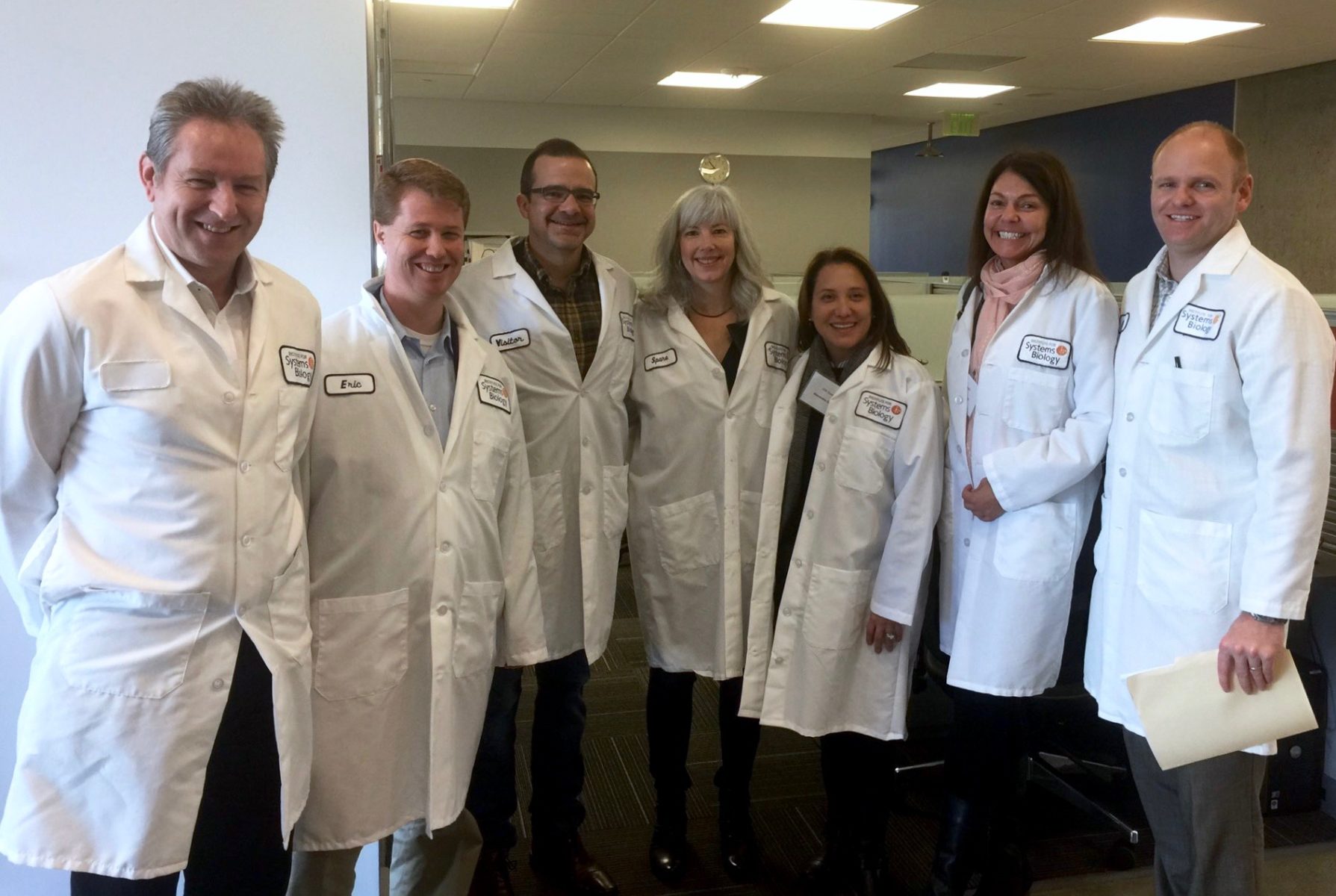Wilke Cohen Lyme Disease Project Update & Site Visit
 isbscience.org/news/2016/10/31/wilke-cohen-lyme-disease-project-update-site-visit/
isbscience.org/news/2016/10/31/wilke-cohen-lyme-disease-project-update-site-visit/
It has been a year of milestones for the Wilke Cohen Lyme Disease Project. ISB received a transformational, multi-year pledge of $3 million from the Steven & Alexandra Cohen Foundation (read press release) and another magnanimous gift from Jeff and Liesl Wilke, who spearheaded the launch of the project in 2015. Our research team was also thrilled to be able to host Jeff and Liesl Wilke and Alex Cohen for a site visit in October. Of the research on Lyme Disease that is currently under way in the U.S., ISB’s Wilke Cohen Lyme Disease Project is one of the most prolifically funded by private philanthropy.
Photo, from left to right: Dr. Robert Moritz (ISB), Dr. Nathan Price (ISB), Jeff Wilke, Liesl Wilke, Alex Cohen, Jeanne Melino (Steven & Alexandra Cohen Foundation), Chris Addy (The Bridgespan Group)
Great to see our grantee, @ISBUSA, today & hear the latest updates on how their fighting #LymeDisease! pic.twitter.com/vW6B8AYJok
— Cohen Foundation (@cohengive) October 26, 2016
(From the press release)
Research Highlights:
- Potential biomarkers: ISB researchers have discovered potential biomarkers, including a set of proteins in the blood known to be important for bone marrow regeneration and stability and other sets of proteins that are key players in the immune response. The results are preliminary and requires extensive follow-up.
- Systems analysis of Lyme disease: ISB researchers and their collaborators have completed the first year of a prospective study in which subjects with newly diagnosed Lyme disease were enrolled and provided blood and urine specimens at several different time points. ISB’s analysis will cover blood and urine proteins, blood and urine metabolites, patients’ immune response, and genetic factors contributing to Borrelia strain differences.
- Multi-omic analysis: The new patient samples enable deep multi-omic analyses that will best reveal useful biomarkers, vaccine targets and possibly new therapeutic targets. The blood and plasma samples will help verify the previously identified protein biomarker candidates and enable detailed exploration of the patients’ immune response to Borrelia infection.
- Detection: ISB researchers have begun an in-depth mass spectrometry-based analysis of Borrelia coat proteins with the ultimate goals of developing methods for direct detection of the Borrelia pathogen and identifying potent vaccine targets.
- Proteomics: ISB’s Moritz Lab has successfully developed a way to grow large quantities of the Borrelia bacteria in the lab, which is necessary to enable the study and identification of the proteins that are crucial to developing diagnostic tools for Lyme.




